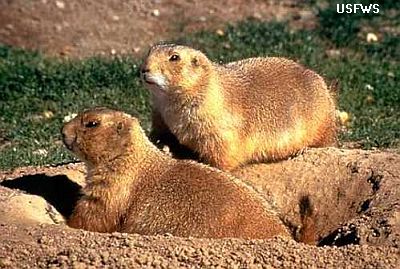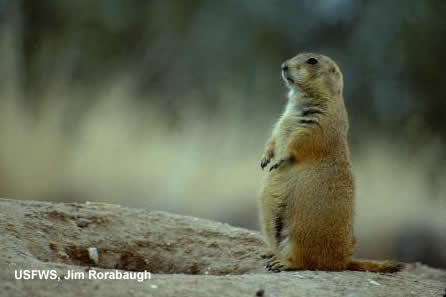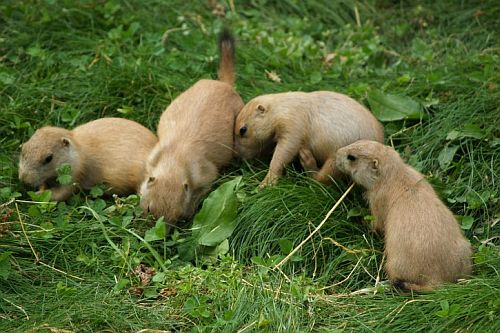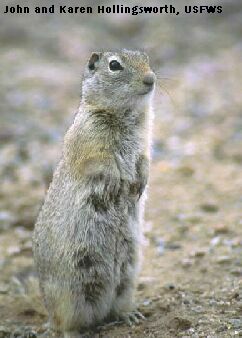THE PRAIRIE DOG

|

|
 Their underground tunnels connect to rooms. There are nurseries, bedrooms lined with dried grass, bathrooms and a listening room which is close to the entrance. Here the prairie dog listens for danger before going outside. a tunnelThe tunnels go down about three metres (or ten feet) and can be 15 metres (50 feet) from one entrance to another. a room underground
3. Appearance 
4. The Young
 5. Adaptations
Many predators hunt these rodents including badgers, weasels, ferrets, hawks, owls, coyotes, foxes, bobcats and snakes. an enemyDiseases (from infected flea bites) have wiped out entire colonies. Man has hunted and poisoned them. 7. Why some people hate the prairie dogs Over the past 100 years much of the range of the black-tailed prairie dog has become cattle pastures and grain fields. Prairie dog poisoning programs are one way that people get rid of them. Why ? Farmers and ranchers do not see the prairie dog as a cute little animal. Prairie dogs eat the grasses that cattle and horses eat. Since they eat alot of grass this leaves less food for other animals. Prairie dogs can also destroy a farmer's crop of alfalfa, hay, wheat or corn.

9. Food Prairie dogs feed on leaves, grasses and grass roots, weeds, seeds and other plants (including crops like alfalfa and corn). They also eat grasshoppers, cutworms, bug and beetles. 10. Status The Black-tailed Prairie Dog is a species at risk in Canada. Some species of prairie dogs are endangered or threatened. The black-footed ferret, Burrowing Owl, and Prairie Rattlesnake are endangered because they rely on the prairie dog for food and shelter.
11. Interesting facts
Besides serving as food for many predators, their tunnels provide homes for burrowing owls, rabbits and hares, ground squirrels, mice, snakes and black-footed ferrets. Prairie dogs are most active during the cool hours of daylight. Most of their time is spent eating . They also like to visit and groom each other.
|
two prairie dogs courtesy of US Fish and Wildlife Service
black-tailed prairie dog - Jim Rorabaugh, US Fish and Wildlife Service
prairie dog pups from http://www.public-domain-image.com/
prairie dog standing - John and Karen Hollingsworth,
USFWS
prairie dogs "kissing" - courtesy of
Mila Zinkova;
License:
Creative Commons Attribution-Share Alike 3.0 Unported